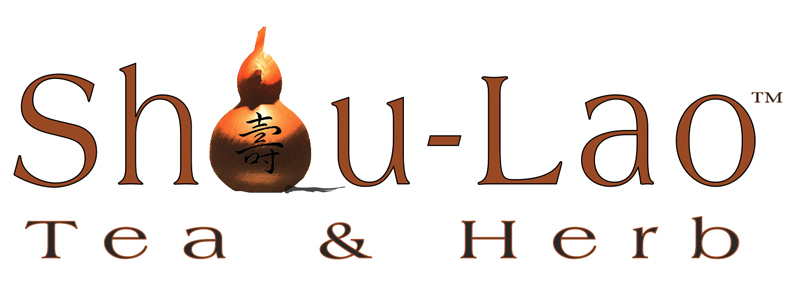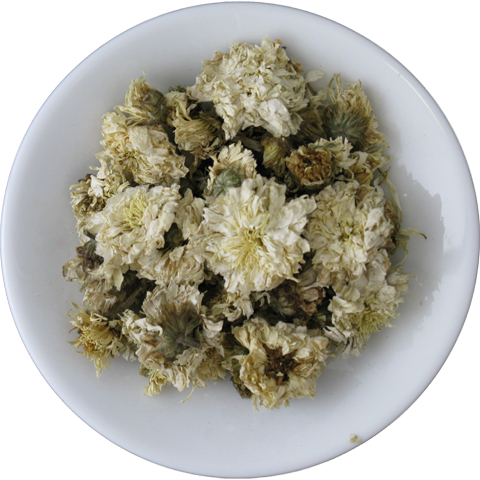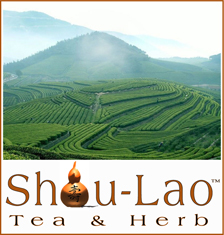Royal Chrysanthemum Flower (Ju Hua) 菊花茶
Chrysanthemum flowers are used extensively in TCM formulas to treat upper respiratory infections, allergies, headaches, red eyes and hypertension. It’s usage effectively reduces irritation and inflammation in the lungs, nasal passageways and throat. Scientific studies have shown it to be anti-bacterial, anti-fungal and anti-viral (reported in Yeung, 1983). It also has a calming anti-hypertensive effect. The Chinese use it for the same purposes echinacea is used in the West, and it is commonly found in various cold and sinus remedies such as the famous Yin Chiao. Excellent when mixed with Puerh tea.
Chrysanthemum tea has adenine, choline, vitamins A, B, amino acids, glycosides, volatile oil and more. It is a high class drink. It is a nerve energizer, detoxifier and blood vessel softener in Chinese medicine to maintain healthy cholesterol level, normal blood pressure, and improve blood flow. Used to "sharpen the vision and hearing, calm the nerves and clear the brain", it remains one of the most important supplementary food items and longevity elixirs in China. It is an ideal beverage for cold and flu season, to clear stuffy nose and head, and for general health.
As an important food supplement and tonic, chrysanthemum has been used in China for more than two thousand years. The Shen Nong's Canon of Materia Medica compiled around 2,800 B.C., rated it as a superior herb the use of which prolongs life. Its central pharmaceutical properties recorded in traditional Chinese medical manuals, are, "pacifying the liver and brightening the vision, relieving fever and removing toxins".
Cuisines with chrysanthemum flowers abound in China, especially in the south. Guangzhou (Canton) features its famous Autumn Chrysanthemum Banquet, and Nanjing (Nanking) provides serialized cuisines with chrysanthemum flowers as the principal ingredient. Chrysanthemum liquor is also very popular.
Eye Problems
A warm infusion of chrysanthemum flowers may be helpful in relieving eyestrain, blurry vision and dry eyes. In addition, it is thought to help prevent and possibly reverse cataracts. You can drink the tea or apply hot compresses for relief from aching, tired eyes. If you have the actual chrysanthemum blossoms, soak them in hot water for a few minutes and make a poultice by placing them between two pieces of gauze. Place a poultice on each eyelid and relax for 10 minutes for relief from eye pain. Speak to your herbalist or practitioner before using chrysanthemum for eye treatments. If you develop any unusual symptoms, stop using the herb and seek medical advice.
Cleansing the Blood
Origin: Zejiang Province, China
Harvest Period: 2013
Brewing Guide: To get the most out of your tea, as a general rule it's always recommended to use glass-based or porcelain tea ware. First rinse the tea cup and teapot with hot water. Then use 1 teaspoons for every 250ml (8 fl oz.) of water. Steep your Chrysanthemum Tea in hot water at 195°F to 205°F for 2 to 4 minutes. Gradually increase steeping time and temperature for subsequent brewings.


References
- Clayton College: Celebrating Hot Tea and Promoting Eye Health
- "The Green Pharmacy Herbal Handbook: Your Everyday Reference to the Best Herbs for Healing"; James Duke; 2002
- Herbs2000: Chrysanthemum
- City University of New York at Brooklyn: Chinese Herbs
- Department of Horticultural Science College of Agriculture & Life Sciences North Carolina State University: Edible Flowers



